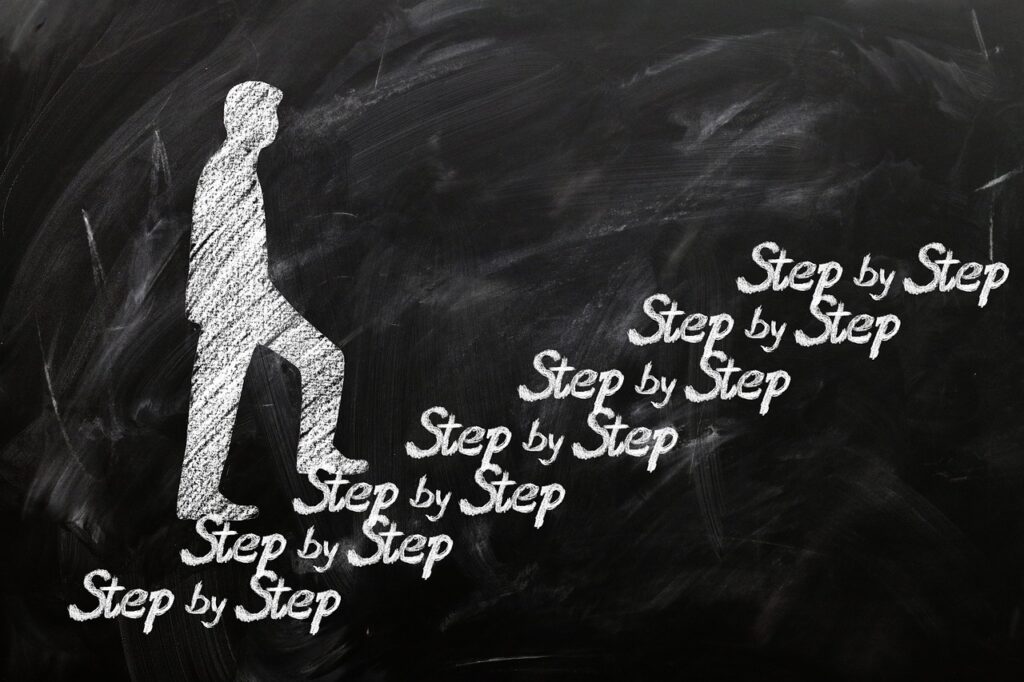
In a world where project success significantly impacts a business’s bottom line, understanding project management becomes pivotal. So, what is project management? Project management involves applying knowledge, skills, tools, and techniques to project activities to meet the project requirements. One of the most widely used methodologies is Traditional Project Management. This article serves as a guide to project management, specifically focusing on the Traditional Project Management approach.
The Fundamentals of Traditional Project Management

Often synonymous with the Waterfall or Linear Project Management methodology, Traditional Project Management is a step-by-step strategy. It follows the framework of the System Development Life Cycle (SDLC), which comprises well-defined, consecutive phases: project initiation, planning, execution, control, and closure. This method ensures that each phase is contingent on the successful completion of the preceding one, resulting in a flow that resembles a ‘waterfall.’
In this approach, the project manager leverages various project management tools to facilitate the process. Among these tools, the Work Breakdown Structure (WBS) and Gantt chart are commonly used. The WBS assists in decomposing the project into smaller, more manageable components, while the Gantt chart provides a visual representation of the project schedule, detailing the sequence of activities and their respective timelines.
In essence, Traditional Project Management is about managing the project’s entire life cycle. The project manager oversees all phases, from the formulation of the initial concept to the final delivery. Each phase must be completed before moving to the next, ensuring a linear progression. This procedural consistency ensures that the process remains systematic and structured, thus offering a clear direction and path towards the project’s completion.
Pros and Cons of Traditional Project Management

Traditional Project Management offers numerous advantages, making it an appealing choice for various industries. Its strength lies in its clarity and methodical nature. Since the process is sequential and each phase has specific objectives, it allows the project manager to have an in-depth plan and maintain rigorous control over the project’s progression. The concrete and pre-determined stages lend themselves to a strong sense of direction and alignment with the project’s objectives. Also, the system of status reporting is effective, allowing stakeholders to easily gauge the project’s progress as it is measured against an established plan.
However, every methodology has its drawbacks and Traditional Project Management is no exception. Its linear and step-by-step nature, while helpful for clear and well-defined projects, may pose challenges when faced with mid-project changes or adjustments. The rigidity of this method may cause resistance or delays when adaptability is required. Further, the sequential model may contribute to late detection of potential issues or problems. Since each stage must be completed before moving on to the next, issues that arise in later stages may cause substantial disruptions, leading to time and cost overruns.
It is important to note that while Traditional Project Management offers a structured and clear approach, it may not be ideal for all types of projects or industries. The choice of project management methodology should consider the project’s nature, complexity, and degree of certainty in its requirements and goals.
Team Roles in Traditional Project Management

A distinguishing feature of Traditional Project Management is the clear delineation of roles within the project team. Central to this structure is the project manager, who spearheads the project from conception to conclusion. Tasked with managing the project’s life cycle, the project manager serves as the primary conduit of communication between stakeholders and the project team. They are also the chief decision-maker, overseeing planning, controlling, and executing the project.
Assisting the project manager in their duties is the project coordinator. This individual is pivotal in ensuring that project activities align with the established project plan. Their role often involves coordinating between different teams or departments, addressing potential issues, and assisting in communication within the project team. This role tends to be a luxury for many organizations. It is more common for a project team to simply have a Project Manager.
Then we have the project team members, each of whom is responsible for completing the tasks assigned to them. These individuals vary based on the nature of the project and can include engineers, designers, developers, or other specialists. Their roles and responsibilities are explicitly outlined in the project plan to ensure clarity and focus. This clear role delineation aids in reducing ambiguity and fostering accountability within the team.
Moreover, there might be additional roles within a traditional project management structure, depending on the project’s scale and complexity. These roles could include quality assurance specialists, business analysts, and stakeholders, all of whom play crucial roles in ensuring the project’s success. Each role in this structure is integral to the project’s progression, contributing to the meticulous, step-by-step nature that characterizes Traditional Project Management.
Project Planning and Execution in Traditional Project Management

In the realm of Traditional Project Management, the planning phase is a cornerstone for project success. This phase hinges on the expertise of the project manager, who crafts an exhaustive project plan by employing the Work Breakdown Structure. This tool breaks down the complexity of tasks into manageable units, simplifying the understanding and execution of each project component.
Once the plan is iron-clad, the execution phase kicks off. This stage follows the project plan religiously, and tasks are executed in a linear, sequential order, mirroring the waterfall model. The importance of adhering strictly to the project plan cannot be overstated, as it ensures that each step of the project aligns with the overall project goals and timeline.
At this stage, the project manager takes on the role of a conductor, guiding the project team through the process, monitoring progress, and adjusting course when necessary. While the project manager is leading, each team member plays a crucial role in executing the tasks assigned to them, contributing to the overall progression of the project.
Though the linear nature of this methodology allows for clarity and simplicity, it does require a high level of vigilance from the project manager. A keen eye is necessary to track the project’s progression, identify any deviations from the plan, and implement timely course corrections.
This is where the control part of the process plays a key role. Regular status checks and updates help ensure that the project remains aligned with the initial plan. Any discrepancies detected are promptly addressed, ensuring that the project remains on schedule and on budget.
All in all, the planning and execution phase in Traditional Project Management requires a delicate balancing act. It involves meticulous planning, diligent monitoring, and strategic control to successfully steer the project towards its completion. The success of this phase not only determines the outcome of the project but also impacts the team’s morale and overall project satisfaction. Hence, the significance of these stages cannot be overstressed in the context of Traditional Project Management.
Communication and Risk Management in Traditional Project Management

Effective communication is an integral part of Traditional Project Management, typically following a structured and hierarchical pattern. It is characterized by formal channels, predefined communication plans, and periodic status updates. These status reports play a pivotal role, serving as the primary mode of conveying critical project information to stakeholders, including the progression of the project, potential risks, and encountered issues.
Risk management, another crucial aspect, is also deeply ingrained in Traditional Project Management. It begins during the planning phase, where possible risks are identified, assessed, and planned for. A thorough risk management plan is devised at this stage, detailing strategies for managing potential risks that might hinder project success. This proactive approach to risk management allows project managers to anticipate and counter potential threats, minimizing their impact on the project and helping to keep it on track.
In essence, both communication and risk management are vital components of Traditional Project Management, serving to facilitate a smooth project lifecycle, uphold transparency, and proactively address potential challenges. By ensuring regular and structured communication, stakeholders remain informed and aligned with the project’s progress. Likewise, with risk management, potential impediments are dealt with upfront, enhancing the project’s resilience and the team’s preparedness in the face of unexpected setbacks. As a result, the project stays on course, mitigating risks and delivering value to stakeholders.
Traditional Project Management in Today’s World

Traditional Project Management continues to hold its ground in a diverse array of industries today, despite the growing popularity of Agile and other modern methodologies. Its suitability shines in scenarios where the project demands are well-defined and alterations are infrequent or minor.
Nonetheless, the ever-changing landscape of project environments often requires a more fluid and adaptable approach. With increasingly complex projects, teams are confronted with the necessity to rapidly respond to changes while keeping the project on track. This is where pure traditional project management can hit a wall due to its linear and rigid nature.
Recognizing this, project teams have begun to experiment with hybrid methodologies that marry the strengths of Traditional and Agile Project Management. These innovative approaches seek to combine the methodical, structured nature of traditional project management with the flexibility and adaptability offered by Agile methodologies.
These hybrid methods allow teams to leverage the systematic planning and control of the traditional approach during the early stages of the project. As the project progresses and the environment becomes more dynamic, they can switch to a more iterative Agile approach, responding swiftly to changes while maintaining the project’s alignment with its objectives.
In a nutshell, the world of project management is evolving, and traditional project management is not being left behind. Instead, it is adapting, blending with other methodologies to form new hybrid models that cater to the complex and dynamic nature of modern projects. While Traditional Project Management may not be the go-to approach for all projects, its foundational principles continue to influence and shape the project management landscape.